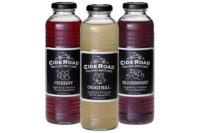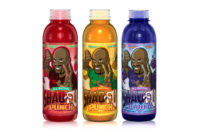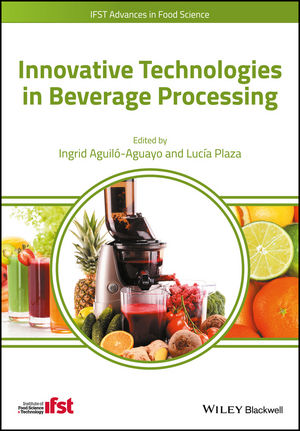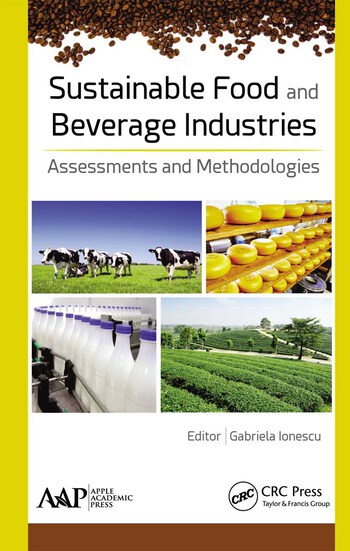Performance ingredients fuel functional beverage formulations
Health and wellness trends influence new product development

Energy performance is considered a top need for a number of consumers, DuPont Nutrition & Health’s Greg Paul says. Eternal Energy 10 Hour Time Release energy shots use a new, patented time-release energy blend called Nutratheine. (Image courtesy of LXR Biotech LLC)

Consumers are exploring new bases for their performance beverages including coconut water, Hilmar Ingredients’ Gwen Bargetzi says. This summer, Vita Coco released its latest line extension: Vita Coco Sport beverages. (Image courtesy of Vita Coco)

Performance beverages are incorporating more natural ingredients, Bioenergy Life Science’s Michael Crabtree says. Golazo Energy Sugar Free drinks contain yerba mate and 100 mg of natural caffeine from green coffee beans. (Image courtesy of Golazo Inc.)

Muscle Milk debuted its Muscle Milk Organic variety, which is formulated with organic milk protein concentrate. (Image courtesy of CytoSport Inc./Hormel Foods)




As beverage-makers continue to develop new products to meet consumers’ needs, health and wellness has become a built-in expectation. Whether it’s for the dedicated athlete or the casual gym member, beverages can offer consumers the functionality they need to maintain or even increase their performance levels.
“Consumer trends are driven by necessity and advertising, both of which have focused a great deal of attention on sports,” says Michael Crabtree, technical director for Bioenergy Life Science, Ham Lake, Minn. “The average consumer is immersed in an uptrend of activity in society. Also, consumers are emulating athletes’ detail orientation to fitness and nutrition through the purchase of products marketed in the stead of the athlete. Take a look at professional sports and its products marketing in the stead of the athlete.
“It is much the same with the corporate fitness culture that dominates most urban settings,” he continues. “Consumers are constantly viewed through a performance-specific frame of reference: job, social — personal or impersonal — and academic. People are generally interested in looking like the people they watch on TV; the performance category of sports nutrition is the vehicle perceived to accomplish this desire.”
Russ Hazen, premix innovation manager of North America for Fortitech Premixes by DSM, Schenectady, N.Y., expands on fitness culture, noting that the increased awareness surrounding personal health and the long-term benefits that sports and exercise can have on general wellness have contributed to the proliferation of performance beverages. “In the past, the majority of consumers that were looking for sports nutrition products were mainly people like bodybuilders and dedicated athletes,” he says. “This has definitely changed to encompass the ‘average’ person interested in developing a healthy regime.
“Mainstream media has done a great job with increasing awareness around the benefits of protein, for instance,” he continues. “This is an ingredient that has interest among bodybuilders, but it’s also of interest to those looking to manage their weight due to its ability to induce satiety.”
Gwen Bargetzi, director of marketing for Hilmar Ingredients, Hilmar, Calif., also notes the contribution that protein has had on the proliferation of the performance beverage market. “Protein is the buzz in beverages,” she says. “Consumers seeking protein and better nutrition see beverages as a convenient and fast delivery system. Additionally, with the acceptance of early concepts like smoothies and probiotic drinks, people have come to expect beverages to deliver functional health benefits. They are, therefore, more willing to try new health and body-benefit ideas that are beverage based.”
However, performance beverages are associated with more than just sports and fitness regimes. Greg Paul, global marketing director for nutrition and weight management at DuPont Nutrition & Health, Copenhagen, Denmark, notes that sports drinks’ popularity came from their ability to deliver on energy first and hydration second. “Even today, in the consumer research conducted by DuPont Nutrition & Health, whether it is with older populations, moms, or fitness enthusiasts and athletes, ‘energy’ is always a top need,” he says. “We’ve also learned that ‘energy’ has different meanings to different people.
“A majority of consumers think about ‘energy’ as long-lasting physical energy, whereas others relate the term to an energy boost or mental energy,” Paul continues. “This lasting trend endures because energy is something you can feel. You know when your energy level is low and you can feel the effect of consuming an energy product, whether it is a cup of coffee, a sports drink or a protein- or fiber-containing beverage designed to deliver long-lasting energy.”
Formulation that fits
In order to ensure products are delivering on their promise to fuel performance, beverage-makers need to be sure they are utilizing the proper ingredients for those formulations.
“The speed of product innovation and new product introduction has significantly increased as the sports nutrition category becomes more mainstream and continues to grow exponentially,” Fortitech’s Hazen says. “Even with fast-track product development, many companies are using ingredients that have a scientific foundation and a strong safety record to back them up, rather than using ‘ingredients of the moment.’ This is in part because consumers are demanding that the products they are buying can actually deliver on this health claim.
“Within the sports nutrition category, they can include products that target such needs as those that help build muscle, those that burn fat, and those that increase endurance and focus, just to name a few,” he continues. “In order to target the hardcore athlete or those consumers that are taking exercise much more seriously than a two or three times a week visit to the gym, manufacturers will need to create products that address the multitude of specific needs within this group.”
Among the ingredients that can serve these need states is coenzyme Q10 (CoQ10). This nutrient can play an important role when it comes to providing energy and endurance, Hazen explains. “It is a fat-soluble, vitamin-like compound that is also known as ubiquinone from the word ubiquitous, which means ‘everywhere,’” he says.
Synthesized in the cells of living organisms, coenzyme Q has 10 different compounds that occur throughout nature; however, CoQ10 is only synthesized in humans, Hazen explains. “Since coenzyme Q10 is a fat-soluble substance, absorption depends upon an individual’s fat digestion efficiency,” he adds. “Coenzyme Q10 is best absorbed if it is incorporated into a beverage with some fat content.”
Hazen adds that L-carnitine (an amino acid); whey protein; conjugated linoleic acid (CLA) (a group of eight isomers that is structurally similar to linoleic acid, also known as omega-6); branch-chain amino acids (BCAA); creatine; and beetroot also are suitable for beverage applications focusing on performance.
Brent Petersen, associate director of research at Glanbia Nutritionals, Carlsbad, Calif., says that some of the most common ingredients found in performance beverages are protein, amino acids and creatine. “Widely known and generally accepted, proteins and, more specifically, amino acids are essential for building muscle mass, muscle recovery and post-workout cell repair,” he says. “Essential amino acids can’t be synthesized in the body and have to be ingested as part of a protein-enriched diet.”
Glanbia offers its PepForm Leucine Peptides, which are derived from patent-pending peptide carrier technology, to assist in muscle maintenance and performance boost, he explains. “Highly functional, PepForm improves the delivery and absorption of amino acids to muscle tissue,” Petersen explains. “With exceptional solubility characteristics, it represents one of the most innovative technical advances of the sports nutrition field and can be incorporated into a variety of everyday products.”
Hilmar’s Bargetzi also notes that “better-for-you” ingredients, such as whey protein, antioxidants, soluble fiber, natural sweeteners, and natural energy sources of caffeine, will be the basis for the next generation of performance beverages and new base formats, including coconut water and white tea.
“Whey proteins provide essential amino acids, high BCAAs and overall good nutrition for recovery, muscle synthesis and endurance,” she says. “Antioxidants and fiber contribute to general health. Natural sweeteners are used for ‘cleaner’ label formulations. Whey protein, natural sweeteners, antioxidants and fiber provide benefits in low-calorie formulations. Bases like coconut water and white tea appeal to consumers seeking simple origins for health and performance.”
Expanding on the protein options, DuPont’s Paul cites a study in the Journal of Applied Physiology that found that using a protein blend of whey, soy and casein prolonged the delivery of select amino acids to the muscles for an hour longer than whey alone.
Carbohydrates also can be found in a number of performance beverages and can be an essential part of a balanced fitness and diet routine, says Joe O’Neill, president and general manager of Beneo Inc., Morris Plains, N.J. “It’s essential to supplement training with the right nutrition before, during and after exercises,” he says. “Carbohydrates are central to sports and exercise performance. According to modern dietary guidelines, an average person should obtain about 55 to 60 percent of daily energy from carbohydrates, equivalent to 8 grams per kilogram of body weight. Carbohydrates provide the essential source of energy for physical performance: glucose. In cases of endurance exercise lasting more than one hour, sports drinks with 6-8 percent carbohydrates should be consumed in amounts of 800 ml per hour.”
For the dietary guidelines data, O’Neill cites “Nutrition and Athletic Performance,” a paper authored by the American College of Sports Medicine, the American Dietetic Association and Dieticians of Canada Nutrition, which was published in the March 2009 Medicine & Science in Sports & Exercise journal.
However, O’Neill adds that many performance beverages contain high-glycemic carbohydrates that release glucose into the bloodstream at a fast rate. To combat this, Beneo offers its Palatinose slow-release carbohydrate to deliver a balanced release of energy over an extended time period, he says.
Natural alternatives
Beyond the all-encompassing health and wellness trend, some consumers also are taking notice of natural and organic trends when balancing their healthy lifestyles. These trends can be found in numerous beverage categories, including performance beverages.
“With increasing concerns about chemical side effects and introduction of synthetic additives into foods, consumer demand for natural alternatives is very high,” Bioenergy’s Crabtree explains. “The natural trend within the nutraceutical industry is much too broad to mention discreetly — that is, there are literally thousands — however, natural variants of health products containing natural ingredients are the most sought after as they contain the implicit equivocal notion that natural equates to healthy.”
Crabtree adds that the Internet has allowed consumers to do their own research about what ingredients they do or do not want to consume. Because of this, ingredients that are considered natural received recognizable attention. However, consumers also have shown interest in technical data, which could be an important item of consideration, he says.
“Consumers want science-based ingredients that do not have an artificial feel; that is substantiation for the cost of goods,” Crabtree says. “If an ingredient is not surrounded and substantiated by at least open-label studies, which can be used as supporting evidence for double-blind, randomized, placebo-controlled human clinical trials, consumers do not have the capacity to make themselves aware.”
DuPont’s Paul notes that trends toward clean label and local sourcing as well as an increasing number of mainstream consumers purchasing performance beverages has led to positive performance for the segment. “This growth has captured the attention of large [consumer packaged goods] companies as well as smaller manufacturers of performance beverage products,” he says. “For example, we are now seeing all-natural energy shots appearing on store shelves. From a protein perspective, demand in performance beverages for organic whey proteins is increasing as is the use of identity-preserved soy proteins.”
Balancing function and flavor
Whether consumers are purchasing organic or traditional performance beverages, many ingredient suppliers note the importance of making sure you are not just delivering on function but also flavor.
“The main challenge when formulating for the sports nutrition sector is to create products that not only deliver functional and formulational benefits but also appeal to consumers,” Glanbia’s Petersen says. “Taste and texture play an integral role in product development and should be a key consideration when producing a new product.”
Petersen adds that ingredients such as creatine and amino acids are not soluble and can affect the product’s organoleptic properties; however, Glanbia utilizes its PepForm technology to offer solubility in beverages coupled with high nutritional value. “Traditionally, developing a great-tasting, mid-range pH beverage fortified with whey protein was almost impossible,” he says. “With recent advances at Glanbia Nutritionals, we are now able to produce shelf-stable protein smoothies at low-, mid- and neutral-pH [levels], allowing manufacturers to create a wider variety of flavors on a neutral flavor base.”
Because all ingredients can pose formulation challenges, Fortitech’s Hazen notes that beverage-makers can employ a number of strategies, including encapsulation of specific ingredients. However, formulators also should take into account the benefit a particular ingredient will have on the final product.
“To be credible, the product should offer a minimum concentration of active components to ensure a measurable benefit,” he says. “It is also easy to focus on active ingredients and overlook the importance of the underlying foundation properties of the product. Many of the active ingredients contribute metallic or bitter flavors. Hence, acidity, saltiness and sweetness should be carefully balanced to optimize the product’s taste and flavor profile. Despite the quest for functionality, the single greatest predictor of a new product’s success is taste, not its functional ingredients.”
Grace Harris, director of new business development and applications for Hilmar, also notes the importance of developing balanced beverage formulations. “It can be a real challenge to formulate a functional beverage, given the many ingredient interactions,” she says. “Key steps to a stable, good-tasting beverage include finding the correct stabilizing system; type of acid, if formulating with a low-pH beverage; and thermal processing parameters.”
To ensure these steps are met, Harris encourages beverage-makers to communicate with their ingredient suppliers’ technical teams to develop an understanding about how to best use their ingredients in products. “Provide as much information about your formulation as possible, enabling the supplier to suggest the right ingredient and how to incorporate it for full performance benefits,” she says.
Bioenergy’s Crabtree adds that when formulating with D-Ribose, a sugar/carbohydrate, formulators need to be aware of the susceptibility of ribose to react with amino acids — in particular, ones with high-charge functional groups. “For example, producing dry blends mixing reductive sugars, like ribose, with equal parts of an electronegative residue, like L-arginine, can result in the occurrence of clumps in the blend over time,” he says. “This can be overcome by avoiding mixing ingredients that have conjugate electrostatic natures.”
Looking for a reprint of this article?
From high-res PDFs to custom plaques, order your copy today!













